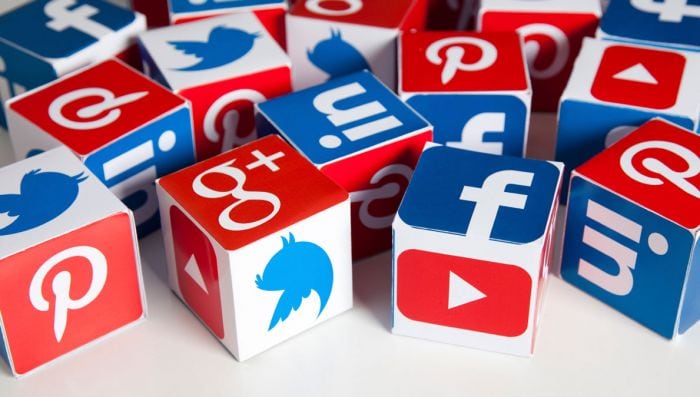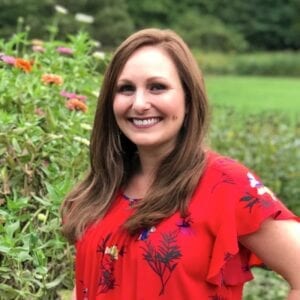
With The Social Shake-Up virtual show nearing, we're giving readers and soon-to-be attendees a chance to hear from this year's speaker roster. The Social Shake-Up cast includes marketing and communication professionals who manage social media messaging at top brands and nonprofits, from the American Heart Association to UPPAbaby.

In this interview, Kristi Daraban, AVP, social media, at Nationwide, discusses social media monitoring, including crisis best practices. During the Shake-Up, Daraban will speak about how social media monitoring factors into business decisions.
For a deep dive into social media content, strategy and measurement, register today for The Social Shake-Up, which is set for Sept. 22-23 (workshops) and Sept. 29-Oct. 1 (sessions and keynotes).
PRNEWS: Our communication shop doesn’t have a formal social media monitoring plan. What should my first steps be?
Kristi Daraban: First, get a grasp on your owned accounts across platforms. Review all incoming private and public comments. You can do this manually, which would require time and headcount. You can also use free tools depending on your follower size. Outline some categories with key stakeholders like PR, legal etc. that collectively you are comfortable engaging with and ones you’re not.
Second, if resources are limited, keep tabs on branded hashtags and mentions of your brand.
PRNEWS: Manually?
Daraban: Yes, or with tools that can range from free and up. If you have more robust technology for keyword searches or product line and interest topic searches, they will keep the pulse and help you prepare or respond for audience feedback. There are point solutions and very comprehensive ones. You need to see what’s right for you.
PRNEWS: As you know, there is so much noise in the social ecosystem. How can communicators ensure they're monitoring the most important content?
Daraban: With a brand name like Nationwide you can imagine it can be challenging to filter for our brand just by the word. We’ve worked hard to create queries that pair keywords and phrases to narrow our results as best as possible and keep relevant mentions. Over time you find trends in the results and refine your searches by adding or subtracting additional words.
Sometimes, general knowledge is just as important as brand-specific. For example, events that are happening in broader culture, or, in our case, the weather. This is where Twitter can be particularly helpful. It shows trending conversations focused on your interests or location.
PRNEWS: Do you have an example where social media monitoring led to a decision about a product?
Daraban: When we launch a campaign we monitor and listen for feedback that can help us optimize quickly. We evaluate sentiment, engagement, specific comments and volume of conversation. We pay attention to trends in all these areas. If sentiment is constant and then spikes in either direction, we evaluate any changes and see if there’s a reason—an influencer talking about it, new placement, media pickup. Often this information helps us change creative, adjust frequency or platform and provide data to shut-off or extend campaigns.
PRNEWS: Moving to crisis, how do you advocate distinguishing between an incident, a potential crisis and an actual crisis? For example, is it purely numbers? Ten-thousand mentions/pictures on Instagram of rotten fruit delivered to a customer is a potential crisis, but 150 mentions is not? Or, is it a mix of numbers and human analysis?
Daraban: Often volume is a key factor, but another very important element is who is saying it. If the person is influential in a mass or even niche way, the traction can pick up quickly and become a problem fast. We also factor in the type of risk it could cause—financial, additional complaints, media attention, political impact or affiliation with cultural causes/trends. Knowing your active advocates and detractors will assist with understanding intent and possible outcomes.
PRNEWS: How does social media monitoring change during a crisis? Do you monitor more and different things?
Daraban: Crisis requires more eyes monitoring more frequently and activating a crisis team that has a role in decision making. Often things change quickly and speed is a key factor to react properly.
PRNEWS: Are more reports sent to more people?
Daraban: Reporting and executive involvement differ company to company, but it's key to know ahead of time your stakeholders and their expectations. Depending on the topic, you may have more things to monitor or fewer. You may choose to prioritize or focus on certain topics and categories to get through the crisis efficiently.
PRNEWS: During a crisis, do you advocate a particular tactic when monitoring uncovers false reports spreading about the company?
Daraban: Social media is an interesting space where fighting a battle focused on a claim someone has made, true or false, can be almost impossible to win. Often remaining silent and allowing your community to self-correct or counter the claim is the best, most authentic method. The partnership of paid, owned and earned also is crucial here as your response may have to be robust to overpower the chatter.
PRNEWS: Do you have an example where you said, ‘If we hadn’t been doing social monitoring, the company would have suffered?'
Daraban: Social monitoring has been integrated across many parts of our organization. It has been a key factor in managing our reputation. With the ability to see what customers and employees are saying, competitors, talent and influencers, media and more, we can pivot quickly and act, if necessary. Nationwide’s mission is 'We protect, people, businesses and futures with extraordinary care.' Identifying, triaging and processing each social media concern or inquiry is an important step to fulfilling this promise. And that's achievable only through social media monitoring.
Click here for more information about The Social Shake-Up.
Seth Arenstein is editor of PRNEWS and Crisis Insider
